
Current Plant List
By Charlie / in General / May 14, 2019

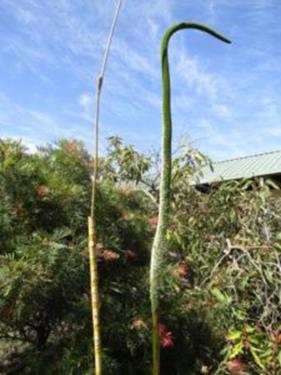
The Grass Tree flower stem growth has now almost stopped and the beautiful little white flowers first appeared on 4th November.
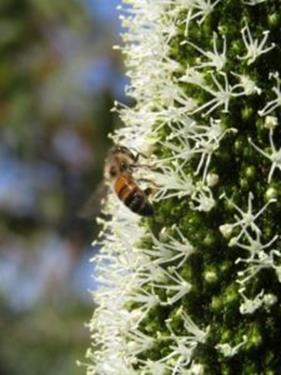
A honey bee attracted to the grass tree flowers.
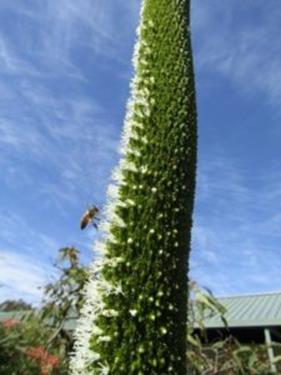
These small white flowers are beautiful when seen up close.
I grew this Xanthorrhoea from a seed and planted Xanthy in this flowerbed 13 years ago. Xanthy will not start growing a stem from several more years but I consider a Grass Tree is just as attractive looking like this and is a great addition to any garden.
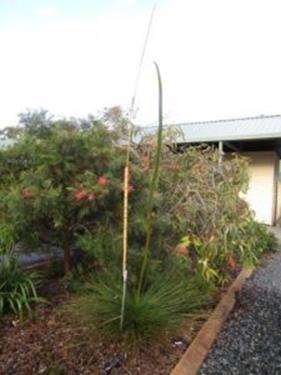
Xanthy's total height is now 270cm. Xanthy is averaging 3.25cm per day.
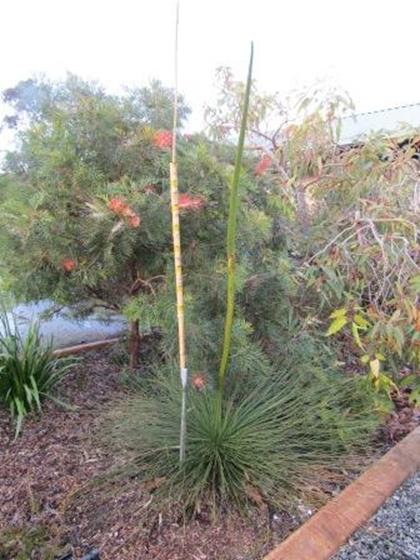
Flower spike on Xanthy our Xanthorrhoes preissii (Grass Tree) 2nd October 2016. This has grown 112cms in 29 days, average of 3.8cm per day.

Xanthy our Xanthorrhoea preissii or commonly called a Grass Tree. We were surprised by the amazing flower stem growth up until the 2nd of September. So we decided that we would start measuring the growth every day at 4.30pm.
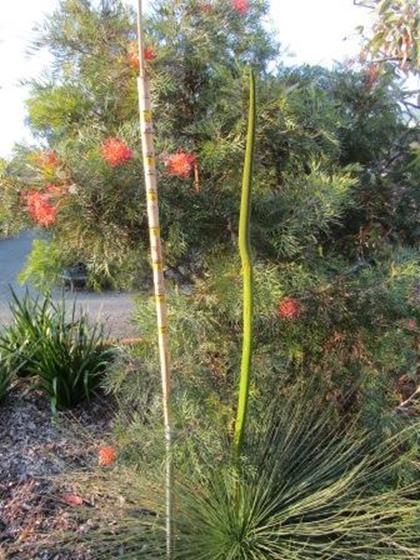
Our Xanthorrhoea preissi has grown 60cm in just 13 days!
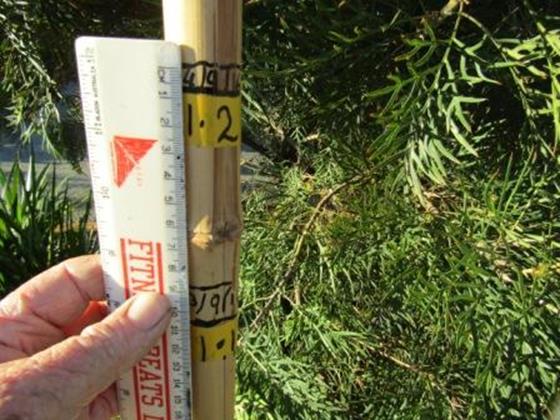
Xanthy grew 9cm in 24 hours between 3rd September and 4th September. Both the 3rd and the 4th were fine sunny days. The flower spike is 1.22 metres tall.
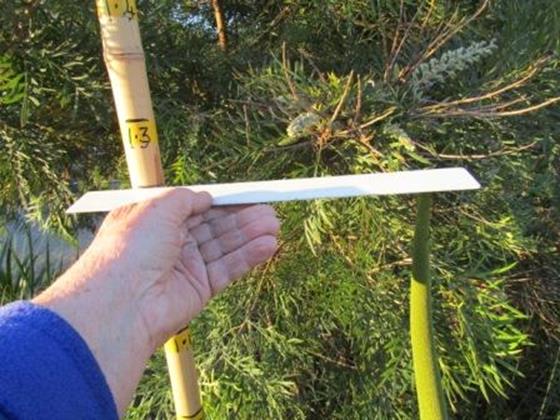
Showing the flower spike at 1.22 metres tall on th 4th September.
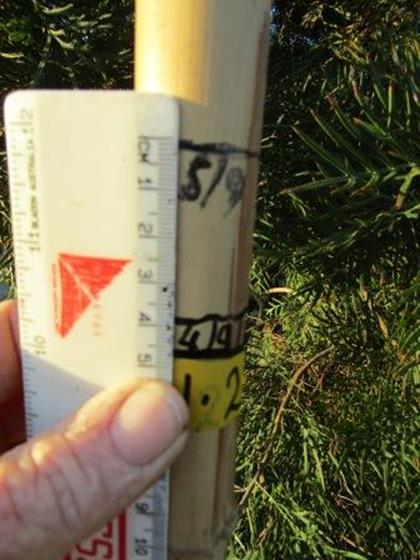
Indicating a 4cm growth on the 5th September.
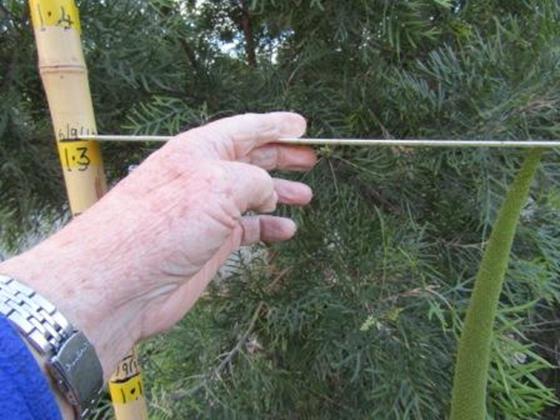
Xanthy's growth by the 6th September, 1.3 metres tall
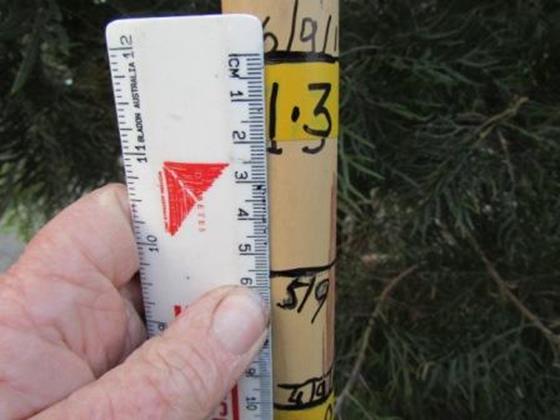
Xanthy's growth of 5.5cm on the 6th September. Total growth since 3rd September = 18.5cm. The day was fine but cloudy.
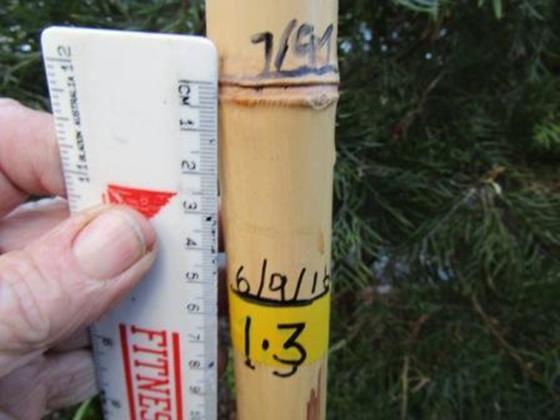
Xanthy's growth by 7th September 5cm. Rain over night and nearly all day. Windy and Cold.
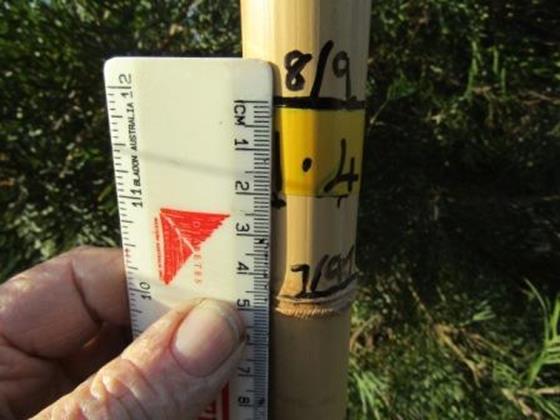
Xanthy is now 1.4m tall having grown 4.5cm in the last 24 hours. The day has been clear, cool and sunny.
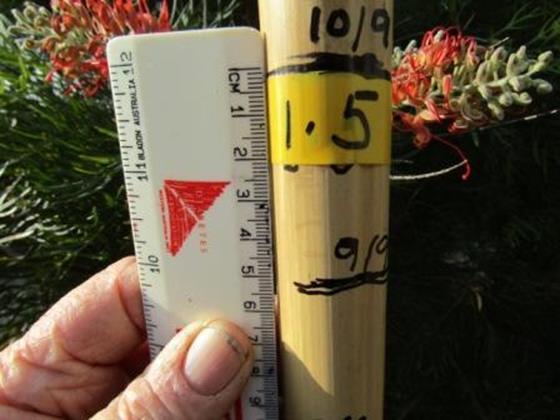
Xanthy's growth by 4.30pm on 10th September. The weather has been sunny, cool but with some rain over night.
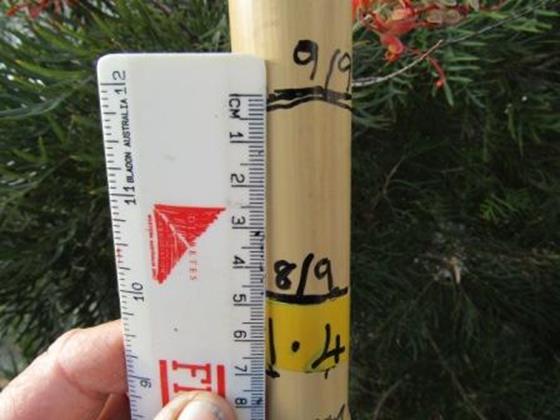
Xanthy's growth on 9th September. The weather has been bright and sunny.
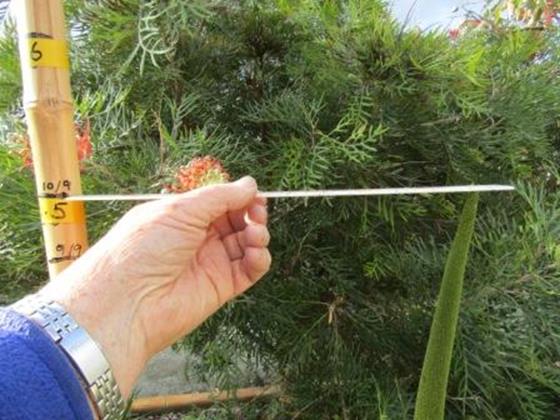
Xanthy's growth 10th September - 5cm. Total height 1.5metres.
Our WA Christmas trees are beautiful but many of them are dying from actions by us humans. Mostly they are being bulldozed for housing, industrial developments or people are failing to protect them on their properties from damage by their livestock.
The WA Christmas tree is very unusual. It has no relatives and is classed in a genus by itself in the mistletoe family. Unlike other mistletoes that grow on the branches of their host trees, the WA Christmas tree grows in the ground. It is partially parasitic which means that its roots make rings round the roots of nearby plants and then extracts water and nutrients from those plants.
The WA Christmas Tree is the only plant in the mistletoe family that has seeds that are wind dispersed. The seeds have wings on them but because the seeds are quite large they often land just a few metres from the parent tree. The majority of seeds are eaten by ants and other creatures, or they are not able to germinate due to the circumstances not being ideal for germination.
During the flowering period which is now, the flowers are a rich source of nectar for the nectar eating birds and insects for the insect eating birds.
The trees develop thick trunks which are made from a starchy tissue which horses love to eat and they continue to chew until they kill the tree. It is important to fence off the WA Christmas trees from horses. It is also important that large numbers of animals are not allowed to stand under these trees, or any trees for that matter, for shade. The compaction of the ground by the hooves of livestock, particularly cattle and horses, can slowly kill a tree.
The weight of the flowers and leaves of the WA Christmas Tree often causes branches to break off the trees which gives them an irregular, often battered, look.
We do not fully understand the WA Christmas Tree and how to give it the best chance of survival when planted into a garden or a bushland setting. In their natural setting they appear to be tough and adaptable. They can be seen growing over a large area from Kalbarrie to Iraelite Bay which includes many different soil types and situations. In reality nobody knows how to help them to grow successfully in gardens or bushland.
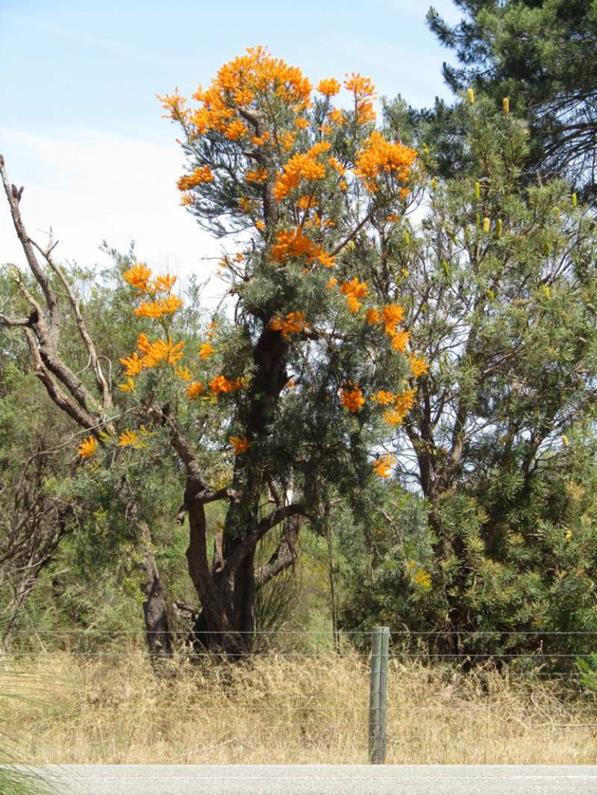
This is the beautiful Western Australian Christmas tree which is flowering now. Its Latin name is Nuytsia floribunda. This an old tree showing wind damage due the weight of the leaves and flowers.
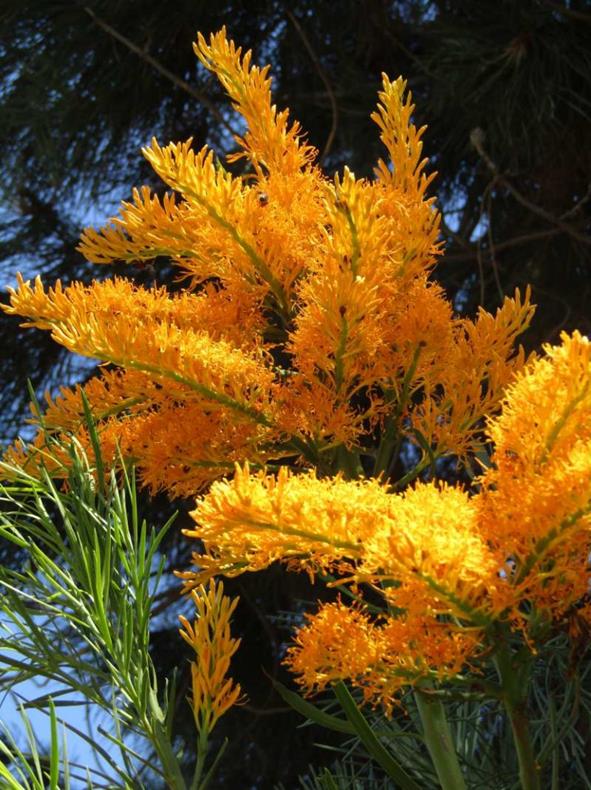
The beautiful flower of the Nuytsia floribunda commonly called the WA Christmas Tree
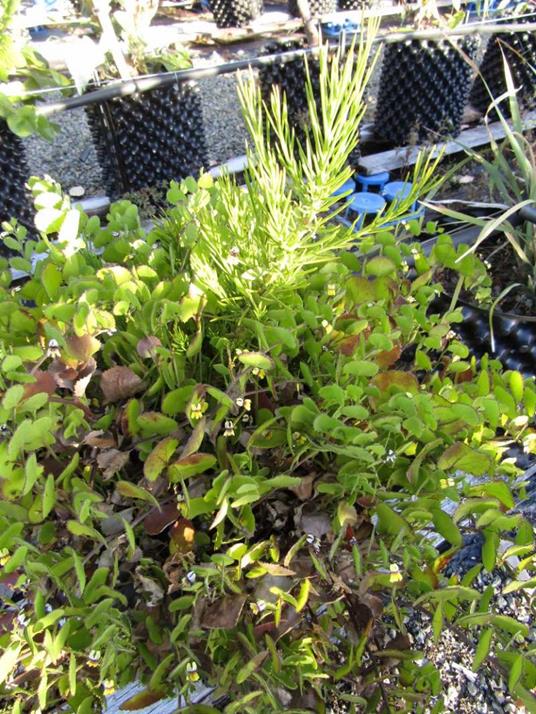
Growing WA Christmas trees in pots is almost unknown because it is problematic. This one is 2 years old and growing in a 23 litre Rocket Pot with a Goodenia varia as its host plant. Perhaps the wrong choice of host plant because the host has grown too big. When this is planted into a garden bed it will be interesting to see the result.
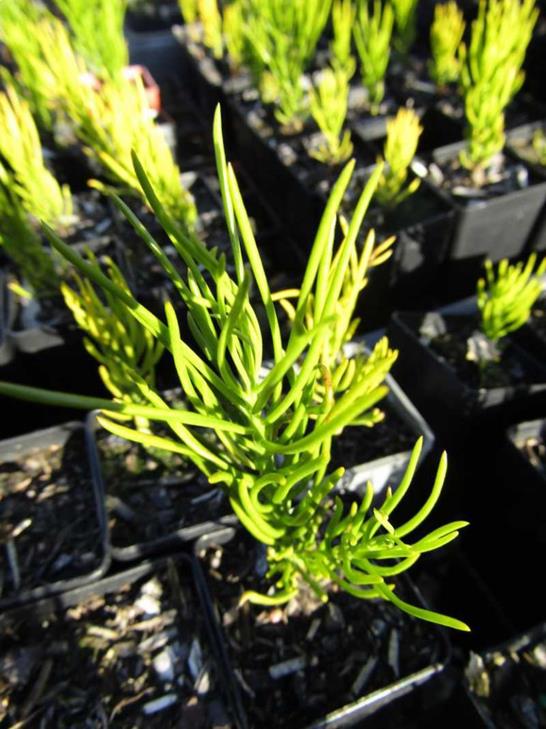
Growing WA Christmas Trees for sale in tubes can be problematic. Some die, like the one on the left and others don't grow very fast like several on the right, yet they were all planted at the same time.
Autumn certainly seems to have arrived, cooler days and gardening is certainly beckoning and we have received a small amount of rain in the last week. Things in nature are changing so fast that it is difficult to know what to include in our Living with Nature Diary. However, today I have decided to feature the beautiful Atriplex species commonly called Salt Bushes that we propagate for sale.
We have one Atriplex isatidea commonly called Coastal Saltbush growing in an area where there is no irrigation. I noticed today that it is beginning to flower but as you can see from the photos the flowers are not very noticeable but it is the large silver/grey leaves that are the attraction. We have several different Atriplex species for sale all of which have their own individual and interesting silver/grey leaves. When growing Atriplex in gardens they are extremely waterwise but some can grow quite large and pruning will help to control them.
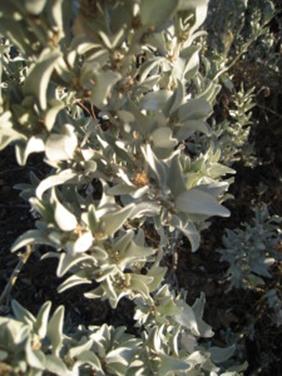
Atriplex isatidea or Coastal Saltbush grows up to 2 metres and flowers from March to June. It requires pruning to keep it looking neat.
The following photos are of different Atriplex that are growing in tubes on our nursery benches.
There are over 40 Atriplex species native to Western Australia.
The Atriplex undulata is native to Wickepin and will grow in heavy clay. The other Atriplex here are to be found in many areas throughout Western Australia and are adaptable to many different soil types.
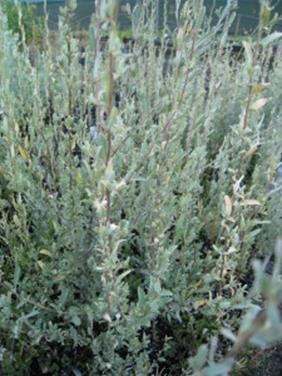
Atriplex amnicola which has a common name of Swamp Saltbush. This grows into a shrub about 1m tall and makes an attractive garden plant. It grows well in all soils including coastal areas.
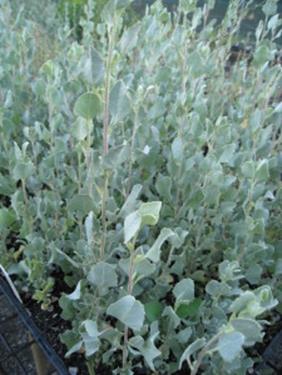
Atriplex nummularia or commonly called Old Man Saltbush. Grows 1-3m tall and the grey foliage adds beauty to any garden.
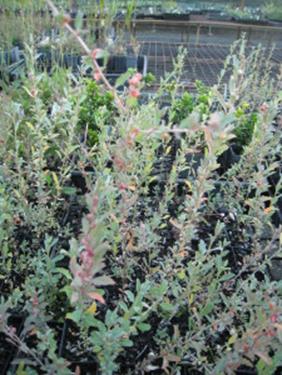
Atriplex semibaccata or Berry Saltbush, an almost prostrate plant. It has small white flowers and is useful in dry hot areas of the garden.
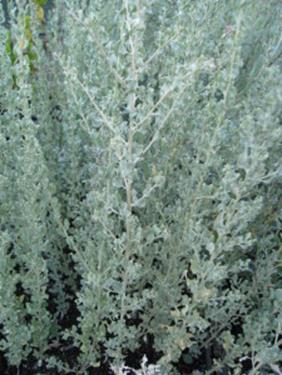
Atriplex undulata (it does not have a common name).
The beautiful Calytrix fraseri commonly called the Pink Summer Calytrix. It grows 0.2-1m high. It prefers to grow in sand, white, grey and yellow, and will also grow on coastal dunes. Summer Flowering. This is a photo taken in our nursery display flower beds.
It is native to the following Local Government Areas: Armadale, Bayswater, Boyup Brook, Bruce Rock, Busselton, Capel, Carnamah, Cockburn, Coorow, Dandaragan, Dumbleyung, Gingin, Gosnells, Harvey, Irwin, Kalamunda, Kondinin, Kulin, Kwinana, Melville, Moora, Murray, Narrogin, Northam, Northampton, Perth, Serpentine-Jarrahdale, South Perth, Stirling, Swan, Three Springs, Victoria Plains, Wandering, Wanneroo, Wickepin, York. (This information, and more, can be found on the Florabase website).
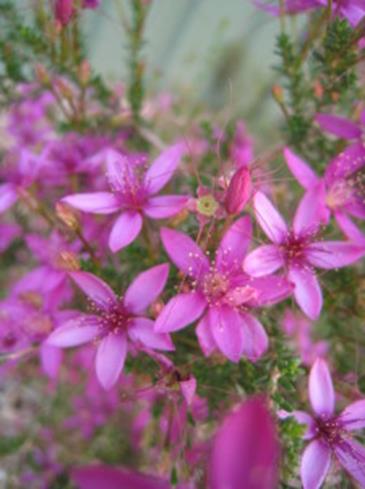
Calytrix fraseri.
This is a photograph of the whole plant which is approximately 0.3m high in our flowerbed.
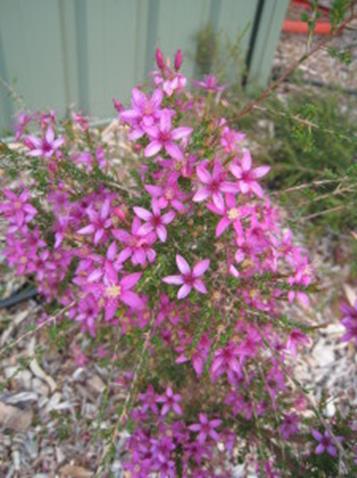
We have recently propagated many Calytrix fraseri and this is a photgraph of a small one flowering in a tube.
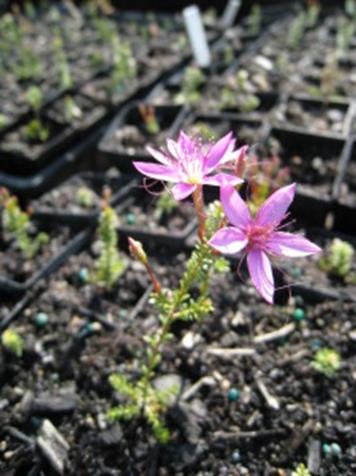
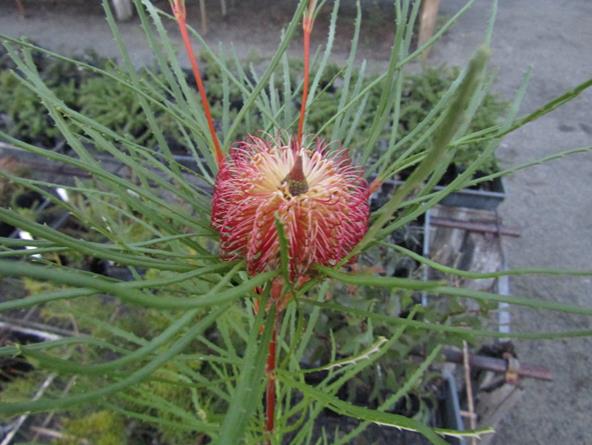
A young Banksia occidentalis commonly known as the Red Swamp Banksia growing in a forestry tube.
Banksia occidentalis is described as a shrub or a small tree and can grow up to 7 metres. When grown in a pot its growth would be restricted so it would make an attractive pot plant for its green fine leaves as well as its flowers. The Botanist, Alex George, describes it as sometimes reluctant to flower. Perhaps that could be when it is growing in the bush where life can be harsh for plants. It prefers growing in peaty sand, or sand in low lying moist areas. It was first collected by Robert Brown in 1801 near King George Sound, on the south coast of Western Australia. It is native to the south coast from Augusta to Cape Arid. The flowers in mature plants are bigger than the one I have photographed here. Alex George describes the flowers as golden with styles of metallic red which is a lovely description. Other people use descriptions like yellow, orange with red styles.
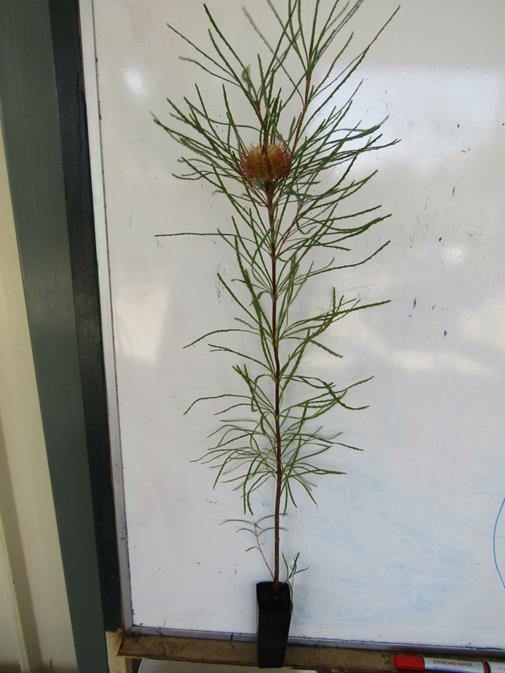
Banksia occidentalis or Red Swamp Banksia showing the whole plant growing in a tube.
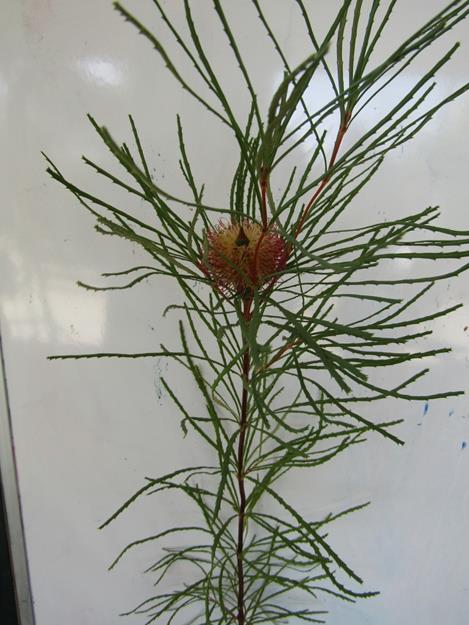
This beautiful flower on this young Banksia occidentalis would make an excellent pot plant as well as an addition to a sandy garden where it can be kept moist.
There are many Western Australian Banksias that can make attractive garden plants and can also be grown in pots. It is important to remember that Banksias do not like phosphorous in the potting mix or in your garden, so do not add any fertilizer once planted in your garden and only use a controlled native fertilizer sparingly when growing in a pot. It is important to keep the mix in the pots moist but not too wet.
Reference: Alex S. George The Banksia Book, Kangaroo Press in association with The Society For Growing Australian Plants - NSW Ltd. (There is no date in the book).